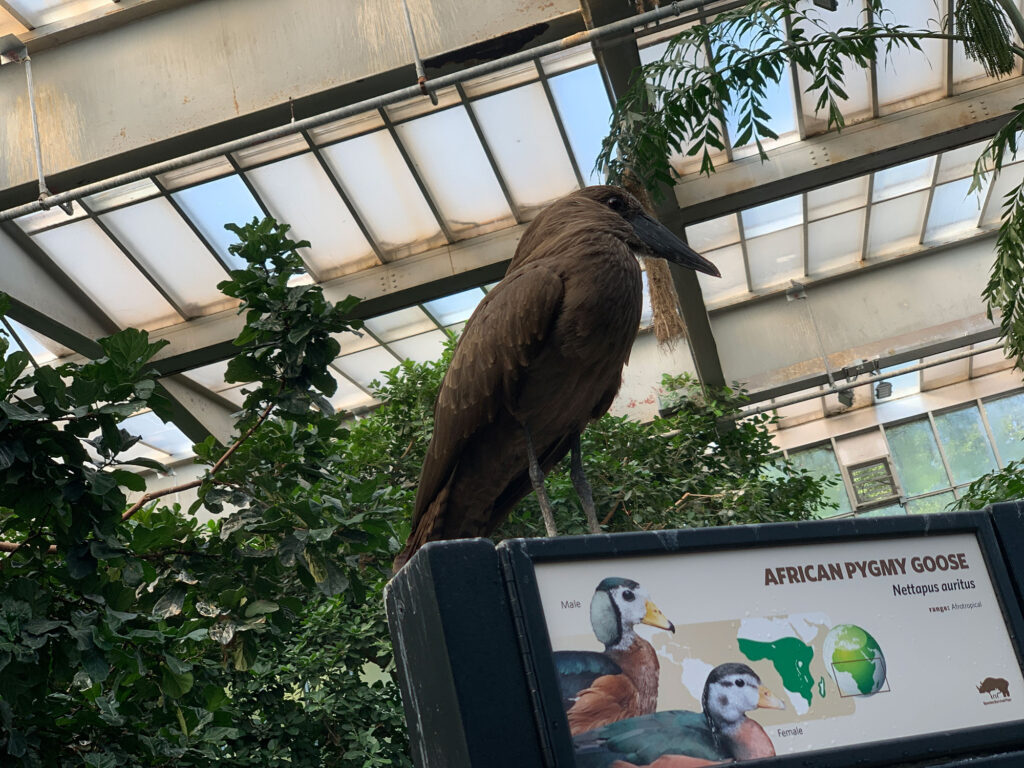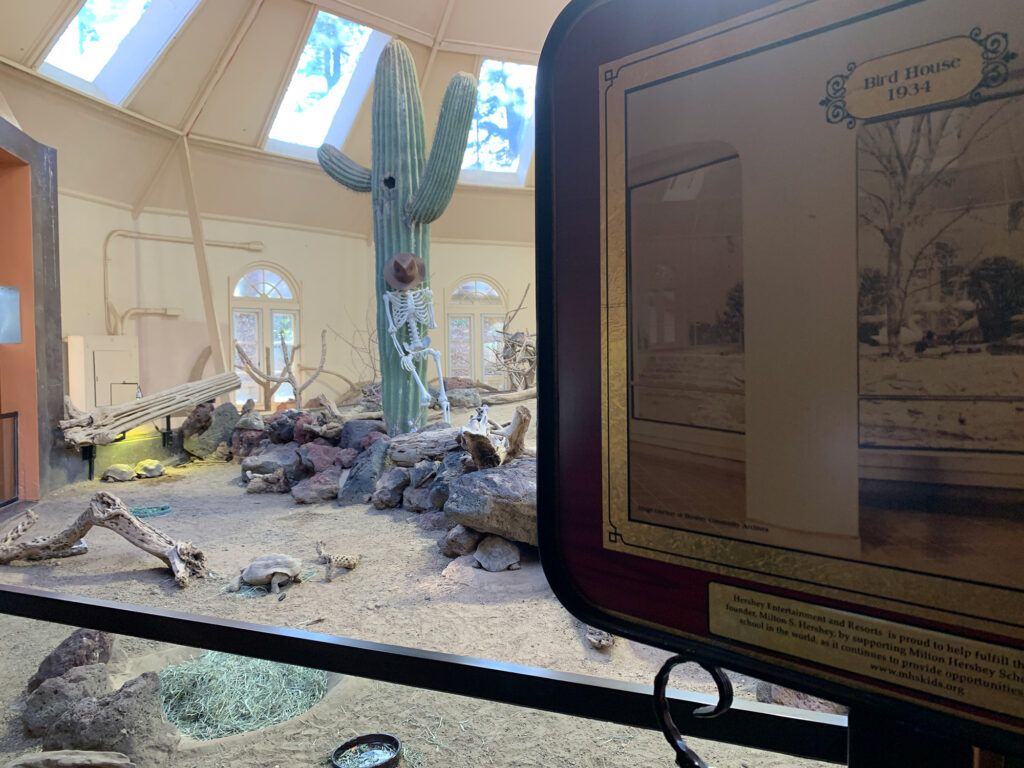
Date of Visit: September 25, 2020
The National Aviary touts that is home to more than 550 birds representing 150 species. Exhibits are organized by habitat – wetlands, tropical rainforest, and the like.
Before guests even enter the aviary, they are greeted by the residents of Condor Court, the Aviary’s outdoor exhibit space. A couple of the enclosures along the fence while others are further separated by a small footpath.

Once guests are inside and tickets are scanned, they can venture out to see the Andean condors, king vultures and demoiselle cranes that also reside in the outdoor habitats.
The outdoor area is one of the smaller exhibit areas while the rainforest is one of the largest.
The tropical habitat is home to colorful macaws, brilliantly white snowy egrets, and a variety of birds large and small that call the Amazon and other rainforests home.

Somewhere high up in the canopy of the trees is one of the few non-winged residents. The National Aviary is also home to a two-toed sloth, who despite its…well…slothful nature is surprisingly good at hiding.
If you want to guarantee your chance to see the sloth, guests can purchase a sloth encounter, one of about a dozen enhancements that can added on to your experience.
Walking through the rainforest, guests arrive in the Canary’s Call, a space that includes the sweet-singing birds among several other tropical species who are endangered because of deforestation and climate change.
Two other exhibits that flow into each other are the wetlands and grasslands habitats.

A flock of bright pink flamingos are the highlight in the wetlands. They are relatively quiet and calm until the 12 noon feeding when all of the birds begin to jostle for position.

More active birds soar from tree to tree, sometimes coming within inches of the guests, unafraid of the humans that are walking through their homes.
In the grasslands, various species of finches and other songbirds fly from perch to perch. It’s a smaller space than the other rooms and the birds feel like they are right on top of you as you walk through their habitat.

Some of the most popular birds in the Aviary must be observed through glass. The bald eagle looks out of his domain from a perch safely away from visitors. So, too, does Steller’s sea eagle.
Also behind glass, but much more playful than the neighboring eagles, are the Aviary’s penguins. The African penguins gather on the rocks and dive into the water, kept at a chilly 60 degrees.

At the 10:30 feeding, all of the penguins crowded around to get their fish, each one fighting for a spot at the front of the line until they’ve had their fill.

At 11 a.m., the show moved across the hall to the theater for the “Amazing Amazon” flight demonstration. (No photos or video recordings are permitted inside the theater).
Visitors are treated to a half-hour tour through the Amazon jungle where they encounter colorful and increasingly threatened species of birds and learn about the dangers they face with the continual deforestation of the rainforest.
It’s an informative and interactive experience (and it’s included with admission).
The Aviary also has a small café – the Atria – and of course the way to the exit is through the gift shop.
For anyone visiting the Pittsburgh area, the National Aviary is a great way to pass a couple hours.

When You Go
- There is a $5 parking fee for anyone parking on the National Aviary’s parking lot. On-street metered parking is available nearby.
- We did our tour in less than two hours, including the 30-minute flight demonstration. Check the Aviary’s website for the day’s activity schedule and plan your visit accordingly.
- Always remember to look up and keep moving. In many exhibits there is nothing but air between you and the birds in the treetops above you.
- Several areas were closed on our visit as COVID-19 precautions, including a child-sized crawl tunnel that offered an underwater view of the penguins (guests can still see the penguins swimming underwater from the main exhibit area).





